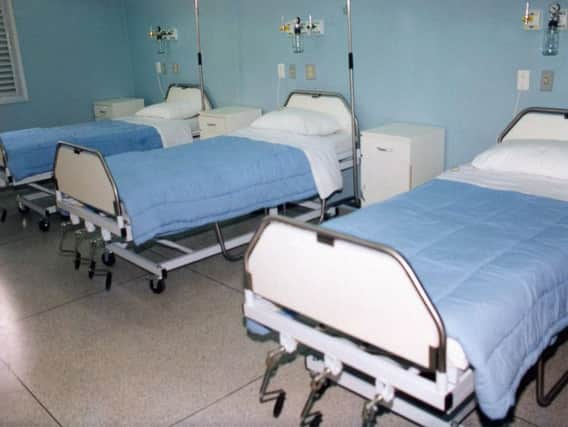A&E ambulance waiting time increases by 62% in north west


Hospitals across the region, including the Royal Blackburn Hospital, are straining under the pressure of increased emergency calls and a lack of social care provision, meaning elderly patients are taking up invaluable bed space.
That was the case at Blackburn last weekend as ambulance crews and paramedics were forced to wait hours to handover patients.
Advertisement
Hide AdAdvertisement
Hide AdThe number of hours A&E ambulance workers spend over the 15-minute allotted handover time in between cases has more than doubled from 17,413 hours in 2013/14 to 46,160 hours in 2015/16.
A North West Ambulance Service statement read: “We are seeing more people in need of our services, especially for ‘red’ incidents - patients with serious and life-threatening conditions.
“This contributes to additional activity at hospital emergency departments,” the statement continued.
“During busy periods this can unfortunately result in ambulance crews having to wait longer to hand over patients into the care of hospital staff before they can be clear to respond to other emergencies.”
Advertisement
Hide AdAdvertisement
Hide AdSome A&E workers employed to provide lifesaving responses have even claimed that they spend more than half their shifts standing in corridors in between handovers, with the amount of idle time equivalent to 286 crews not working for a whole year.
Emergency services currently reach just 68.3% of immediately life-threatening 999 calls within the target eight-minute timeslot, with authorities aiming to increase that figure to 75% in the future.
“Absolutely, we’re seeing an increase [in emergency admissions],” said an NHS Trust spokesperson. “And the aging population is one part of that increase, we suspect.
“People are living longer, with more chronic conditions being managed.”
Advertisement
Hide AdAdvertisement
Hide AdNHS statistics also show that the increased number of emergency calls is putting a severe strain on call responses, with the number of ambulance calls being abandoned before being answered has more than tripled in a single year from 3,282 in March 2015 to 11,082 in March 2016.